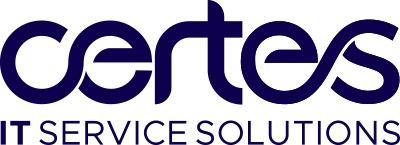Due to the continued success of the Certes’ forums, the latest event took place at Skanska UK’s head office at the end of November, kindly hosted by Tony Michaels and his team. This event took a slightly different format from previous events with the majority of each session occupied by different BRM Managers presenting their current BRM strategy, followed by Q&A from the delegates. Jon Baxter from Baxter Thompson Associates also kindly presented back his findings from a recently commissioned survey.
Due to the confidentially of elements of the BRM Manager presentations, these cannot be shared with the wider community. However various themes, findings and recommendations were discussed throughout the day. These have been summarised below.
Morning Session
Agenda
9.30am – 9.35am – Introduction by James O’Driscoll
9.35am – 10.55am – Tony Michaels (Lead IT Business Partner – Skanska UK) - Presenting their BRM strategy and Q&A
10.55am – 11.10am - Gerard Raja (Head of I&O – Skanska UK) – How the BRM role brings value to I&O in IT
11.10am – 12 pm – Jon Baxter (Managing Director – Baxter Thompson Associates) - Survey results presentation (
http://bit.ly/UKITBusinessPartnerSurvey2016) and Q&A
Delegates
Oliver Newall - Senior IT Business Partner – Skanska UK
David McNeight - Senior IT Business Partner – Skanska UK
Samantha Cooke – IT Business Relationship Manager – NFU Mutual
Nick Pearson - VP Innovation for Corporate Services – RS Components Ltd
Chris Connell – Business Relationship Manager - British Standards Institution
Jonathan Byron – Business Partner – British Council
Sherri Cozier - Head IT Business Partner - Viridor Ltd
Peter Ash - IT Engagement & Project Delivery Manager – Lendlease
Phil Stockton - IT Business Partner – Travis Perkins Plc
Inna Stelmukh - Global IT Business Manager - SGS Ltd
Ken Wilson – Senior IT Business Partner – Engie
BRM department alignment
- In an ideal world, each individual BRM would be aligned to a specific BU and all BUs would have a BRM role assigned to it. However, everyone accepts due to resource demands this is difficult to achieve.
- Delegates suggested different options as to how BRM functions can be aligned, including via specific BUs, region and senior management coverage (e.g. one company aligns a BRM to each Director who covers more than one BU). All have different challenges (e.g. in a regionally aligned model it takes more time to develop relationships and in a vertical BU model, whether that be a specific BU or multiple BUs the challenge is more around demand vs. supply).
- The majority of delegates operated under some form of BU model.
- What was agreed was the relationship and proximity of the BRM in relation to the BU are the most important factors. A BRM won’t be effective if there is a poor relationship with the key stakeholders of the BU and a relationship is more challenging if the BRM and BU are on different sides of the country.
- The final point on this topic was regarding where does the BRM sit? Within the business or IT? The general consensus here was that it will depend on the maturity of the relationship. The higher up the maturity model the more likely the BRM should sit within the business.
Plan on a page
- This is a recently implemented document by Skanska used to highlight the business strategy for the next five years.
- Skanska ensure this plan on a page aligns with the IT plan on a page (IT strategy) and helps define the technical capabilities required of their IT function.
- Within the BRM plan on a page Skanska have identified 11 verticals/activities (e.g. business cases) that are important to the success of their role(s).
- They then categorise each activity into bronze, silver and gold. Bronze being the minimal level (e.g. ensure every request for work has some form of business case) through to the highest level gold (e.g. benefits realisation tracking). Such categorisation will depend on various factors such as the maturity of the stakeholder/business, how key the relationship is etc.
- Skanska find such document very useful as it helps highlight the role and duties of the BRM. It also shows what the BRM shouldn’t be doing. This helps avoid BRMs being dragged into more tactical responsibilities and gives the business a greater understanding of what role the BRMs are undertaking in the background and what value they bring.
The “Top Table”
- All delegates are trying to get to the “top table” for each of their BUs, with various degrees of success.
- However, there are some that feel such an objective is a false economy. Why can’t the BRM make their own “top table” where the business comes to them? Don’t seek the outcome of sitting at the top table, but do the background research to develop the insight you require to help business stakeholders make an informed decision about how they deliver their improvements. This will ultimately lead to you being invited to the “top table” and more importantly, ensure you stay there.
Get your house in order
- A mature, effective and well-resourced service delivery function which takes ownership of IT issues, will help with the effectiveness and success of a BRM function. If such a function does not exist BRMs may find themselves supporting service delivery. The question to ask the business stakeholders is, “does this meet their expectations? If yes, then despite the most skilled, strategic BRM and their insight, the business stakeholder may not appreciate the value.
- Having mature ITIL processes will help ensure BRMs are able to efficiently escalate and delegate service requests.
- If organisations are considering implementing a BRM function, a full understanding of the organisation competencies and capabilities are required to help create an implementation roadmap. Typically however, the effectiveness of the BRM role is dependent on mature service delivery.
Other
- BRMs are still experiencing challenges regarding not being involved in IT projects until late on in the process and the business trying to assign projects to BRMs that only have small elements of IT. This situation can be improved in part via stronger governance, better process around RFPs, driving better business cases with clear outcomes and ensuring that the whole organisation takes accountability for delivering those outcomes.
- There is still some confusion within organisations/BUs regarding what services are offered by the BRM function. A plan on a page can help here, as could a service map.
- The importance of relationships with other BPs in the organisation should not be forgotten.
Afternoon Session
Agenda
1.30pm – 1.35pm – Introduction by James O’Driscoll
1.35pm – 1.50pm - Gerard Raja (Head of I&O – Skanska UK) – How the BRM role brings value to I&O in IT
1.50pm – 2.30pm – Chet Patel (Senior IT Business Relationship Manager - Deloitte LLP) presenting
their BRM strategy and Q&A
2.30pm – 3.10pm – François Mounier (Head of Business Engagement & Solutions – Peabody) presenting their BRM strategy and Q&A
3.10pm – 4pm – Jon Baxter survey results presentation
(
http://bit.ly/UKITBusinessPartnerSurvey2016) and Q&A
Delegates
Richard Denman - Senior IT Business Partner – Skanska UK
Austen Allard - IT Business Partner – Skanska UK
Yogesh Unadkat - IT Business Partner – Skanska UK
Kirk Albasini - IT Business Partner – Skanska UK
Jeremy Byrne - Business Relationship Manager for IT Services at Loughborough University
Kalpesh Jagatia - Head of Business Relationship (Defence & Security) – Babcock International Group
Chris Weston – Technology Advisor - Chainmaker Consulting
Elisabeth Rowark - IS Strategy and Business Partnerships Manager - Northumbrian Water
Sarah Nelson – Business Relationship Manager – The NEC Group
Paul Walton – Independent Consultant
Ian Huke – Independent Consultant
How to improve relationship maturity with the rest of the organisation
- Make sure service delivery processes, ownership and sponsorship are clearly defined and effective.
- Ensure project delivery processes, ownership and sponsorship are clearly defined and effective.
- Credibility in the above two capabilities amongst business stakeholders needs to be established before engaging conversations that tackle the longer term business direction and technology impact.
- Consensus is that engagement with business and IT stakeholders require strong relationships. This will be a dependency for sensitive discussions with senior level people. These competencies are difficult to train and require coaching and feedback. The use of NLP techniques could help in a coaching context to improve influence.
- BRMs need to be ready to have the more strategic conversation when the BU/stakeholder is ready to do so. This requires insight into industry and relevant technology trends and an understanding of the business and IT strategy. Without which it’ll be harder to have that conversation again.
- Discovery workshops with colleagues, other companies and IT conferences have also helped delegates gain more insight
- Small BRM functions can utilise a virtual account management team. This virtual team can deal with tactical requests and allows BRMs to focus more on strategy. Other delegates felt splitting BRMs into junior (tactical) BRMs and senior (strategic) BRMs also helped at the very least allowing the senior BRMs to climb and stay in the strategic space.
- There is a possible issue in the future as a number of IT departments are looking to move into the strategic space (EAs, BAs, BRMs). IT need to ensure they are having joined up conversations, which needs to be facilitated by BRMs.
Mavericks
- Mavericks exist in all organisations and such individuals will become increasingly difficult to manage due to ever-changing technology landscape. One option is to consider teaming up with them and leverage their creativity to harvest new opportunities.
- BRMs need to ensure policies are clearly communicated (either via strict rules or more flexible guidelines) and enforced wherever possible. For the latter, this can be via someone who is responsible for risk. BRMs (and the wider IT department) are there to communicate the perceived risk and escalate where necessary to avoid it becoming an issue.
- BRMs should accept they are not going to capture everything.
Change
- BRMs need to ensure they are part of business change from an initial scoping phase.
- Ownership of change needs to be with stakeholder looking to make the change.
- Governance is essential within business change projects however this can lead to frustrations e.g. the stakeholder cannot have it straight away. BRMs need to find the right balance of governance (to include clear communication as to why the governance is in place) and understanding of the stakeholder's challenges and identify options of how change can help with those challenges. It is important to understand one’s own level of skill in advising in this space, so bringing in experts early will help avoid common mistakes. The objective should always be to achieve the change in the most effective, durable way possible.
- Some delegates have found success in using an exceptional route outside of the usual process if a change is absolutely essential, immediately. However, if this happens stakeholders must know the risks and accept such risks are on their own shoulders.
- Pre-defined cue cards have also been successful with some delegates. They are used to prompt thoughts and highlight risks with stakeholders for new projects at the very start.
- CIO buy in and initial communication is fundamental to ensure successful change.
- A well-promoted, sponsored and agreed change programme can help establish BRM functions that engage business stakeholder to adopt different behaviours with the IT team, notwithstanding the dependencies mentioned earlier.
BRM as a gap filler
- All delegates accept that BRMs do end up filling gaps and this shouldn’t be something BRMs are fearful of in this multi-skilled world. In negotiating requests it is important to ask for something in return if it is outside the responsibility of the role, setting expectations and suggesting what can be done differently next time.
- What BRMs need to be aware of is what are the gaps they’re being asked to fill. Does it affect your reputation? At work you are known for what you do and say
- If it is unavoidable, BRMs need to make it clear it is against the norm and try and work with other colleagues to identify and implement steps to avoid having to fill that gap in the future.
Other
- Does IT need its own BRM?
- How do we evolve the BRM role without stepping on other peoples toes in IT departments?
Other ongoing themes from both sessions
- Poor Value Realisation.
- Finance Recharging Model for IT services.
- Challenges of avoiding a tactical role.
- Enterprise architects – how do they/should they work with BRMs?
- CIO at board level to help promote the IT function
Exercise - What do IT want from BRMs?
As all BRMs know, there can be a disconnect with IT* as this department feel BRMs are always representing the business and not themselves. We, therefore, felt it would be a useful exercise to ask a senior member of the service delivery and operations team in an IT function (thank you Gerard Raja of Skanska) to provide some input into what IT want from BRMs. Suggestions included:
- BRMs and IT need to work together to understand the real business benefit for project. Only if it adds real business value should a project go ahead.
- IT need to understand what work is coming down the pipeline.
- BRMs should be more involved in IT project meetings.
- BRMs should help IT write the business cases for technical projects.
- BRMs need to show they represent IT, to be one voice and if required, take the “heat” (IT feel that BRMs simply go back to IT when there are issues and blame them).
- BRMs need to allow IT to have space to fix issues within agreed timeframes. Once the issue has been fixed you can then look at why, how etc.
- BRMs need to ensure internal (IT) stakeholders are not forgotten in terms of building relationships.
- IT need to understand why BRMs are questioning what they’re questioning.
These comments led the BRM delegates to respond with the following:
- BRMs question if taking the “heat” is actually teamwork?
- BRMs feel that taking the “heat” is more the duty of service delivery, unless it’s business critical (but then what is business critical).
- BRMs believe they shouldn’t always have to deliver bad news, it can sometimes be joint representation by both the BRM and IT as there is often a mutual dependency. This also clearly demonstrates there is “one voice”.
- IT need to have a better understanding of the business.
- IT need to provide excellent customer service, at all levels.
- BRMs need visibility of technical roadmaps.
- BRMs need to be aware of issues before the rest of the business. This ensures BRMs are on the front foot when dealing with stakeholders/BUs.
- IT should take away the operational pain, allowing BRMs to become more strategic.
Based on the above it is clear there is still significant work required to become “one voice”, which both parties need to realise is important to the ongoing success of each others roles. Both IT and BRM must realise that there are part of one team and therefore are looking to achieve common goals. Various steps need to be addressed such as improved communication, a greater understanding of each other roles and more understanding/acceptance of the benefits each can bring. One way of improving this relationship is to ask senior IT stakeholders to highlight how they currently perceive the effectiveness of BRMs via workshops and help understand the impact and alternative actions to improve this relationship.
*For the purpose of this exercise, we separated BRMs and IT. However, we are fully aware the two functions are part of one overall IT department.
Next steps and thanks
Due to the continued success of the sessions more are planned. If you are interested in joining this session please get in touch with James O’Driscoll:
Email -
james.odriscoll@certes.co.uk
LinkedIn -
https://uk.linkedin.com/in/jamesodriscoll
To keep up-to-date with everything BRM and information on upcoming forums, please join Certes' IT BRM/Business Partner LinkedIn group.

Finally a big thank you to Skanska UK for hosting the event, our presenters Tony Michaels, Gerard Raja, Chet Patel, François Mounier and Jon Baxter for their insight and again Jon Baxter for help editing the notes and producing and analysing the survey (
http://bit.ly/UKITBusinessPartnerSurvey2016).

 Finally a big thank you to Skanska UK for hosting the event, our presenters Tony Michaels, Gerard Raja, Chet Patel, François Mounier and Jon Baxter for their insight and again Jon Baxter for help editing the notes and producing and analysing the survey (http://bit.ly/UKITBusinessPartnerSurvey2016).
Finally a big thank you to Skanska UK for hosting the event, our presenters Tony Michaels, Gerard Raja, Chet Patel, François Mounier and Jon Baxter for their insight and again Jon Baxter for help editing the notes and producing and analysing the survey (http://bit.ly/UKITBusinessPartnerSurvey2016). 

















